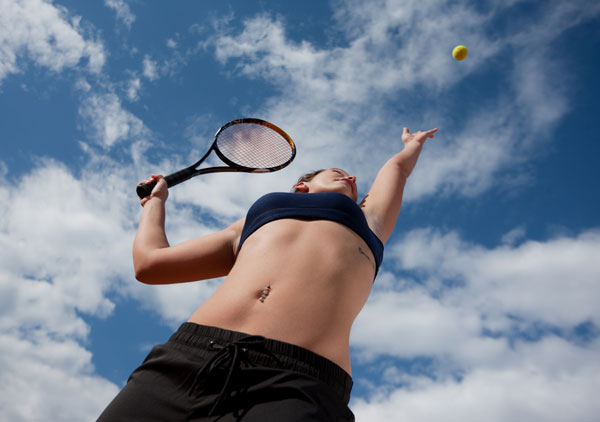Steroids Offer Little Help for Tennis Elbow

People with tennis elbow may not benefit from corticosteroid injections over the long term, a new study from Australia suggests.
In fact, the findings suggest that the shots may actually make matters worse compared to a placebo (or "dummy treatment"), the researchers said.
The shots did have a temporary benefit. Four weeks after receiving a steroid injection people suffering from tennis elbow had reduced pain and disability compared to people who received a placebo shot.
But one year later, people who had gotten a steroid injection were less likely to say that they had recovered from their condition, and more likely to have had the condition recur, compared to those who had received a placebo shot.
Combining the steroid injection with physical therapy also did not appear to make a difference. People who received a steroid shot along with physical therapy fared no better after one year than those who received a placebo shot and physical therapy.
But physical therapy by itself may still provide a benefit, the researchers said. In the study, people who received a placebo injection and physical therapy were more likely to say they had recovered from their condition after four weeks compared to people who did not undergo physical therapy.
Tennis elbow issoreness or pain on the outside region of the upper arm near the elbow, according to the National Institutes of Health. The condition is caused by damage to the tendons that connect the forearm muscle to the bone on the outside of the elbow, the NIH says.
Get the world’s most fascinating discoveries delivered straight to your inbox.
Symptoms can bother tennis players when they attempt a backhand stroke, hence the name. But other activities that involve repetitive twisting of the wrist, such as painting, plumbing or even constant computer and mouse use, can cause the condition, the NIH says. Resting and avoiding the activity that aggregates symptoms; icing the elbow; and taking pain medication such as aspirin may help relieve pain caused by tennis elbow, the NIH says.
During the study, 165 people who had suffered from tennis elbow (called unilateral lateral epicondylalgia) for more than 6 weeks were randomly assigned to receive one of four treatments: a steroid shot, a placebo shot, a steroid shot plus physical therapy, or a placebo shot plus physical therapy. The researchers were mainly interested in the effects at the one-year-mark. (Often, the condition will resolve on its own by this time.)
After one year, 83 percent of patients who had received the steroid injection said they had completely recovered, compared with 96 percent of those who had received th placebo shot. Fifty-four percent of patients who had received the steroid shot saw their symptoms go away and return at some point during the study compared with 12 percent of those who had received the placebo shot.
The findings agree with previous studies that have not found a long-term benefit associated with steroid shots for tennis elbow, the researchers said.
It's not clear why steroid shots would have a short-term benefit for tennis elbow pain. Steroids lower inflammation, but inflammation is not thought to play a major role in the underlying cause of tennis elbow symptoms, the researchers said.
Nevertheless, the short-term pain relief some people get from steroid shots may lead to excessive or inappropriate use of the joint, which could, in turn, result in poorer long-term outcomes, the researchers said.
The study did not include people who had neck or upper limb pain along with their tennis elbow, or those who had received steroid injections or physical therapy during the previous three to six months, so the results may not apply to these individuals.
The study is published in the Feb. 6 issue of the Journal of the American Medical Association.
Pass it on: Steroids shots don't help people with tennis elbow over the long term, a new study suggests.
Follow Rachael Rettner on Twitter @RachaelRettner, or MyHealthNewsDaily @MyHealth_MHND. We're also on Facebook & Google+.

Rachael is a Live Science contributor, and was a former channel editor and senior writer for Live Science between 2010 and 2022. She has a master's degree in journalism from New York University's Science, Health and Environmental Reporting Program. She also holds a B.S. in molecular biology and an M.S. in biology from the University of California, San Diego. Her work has appeared in Scienceline, The Washington Post and Scientific American.


